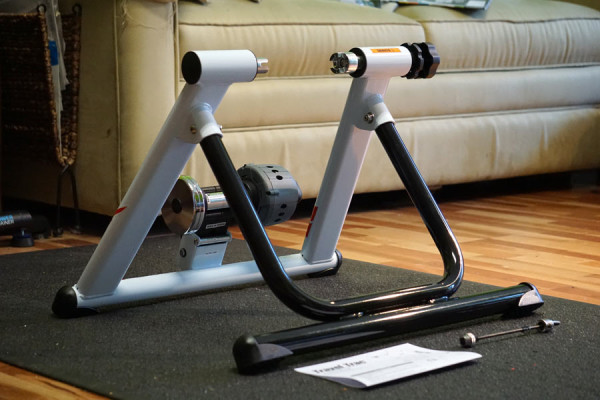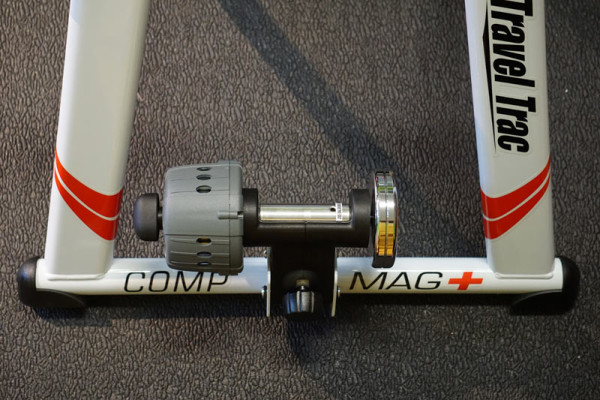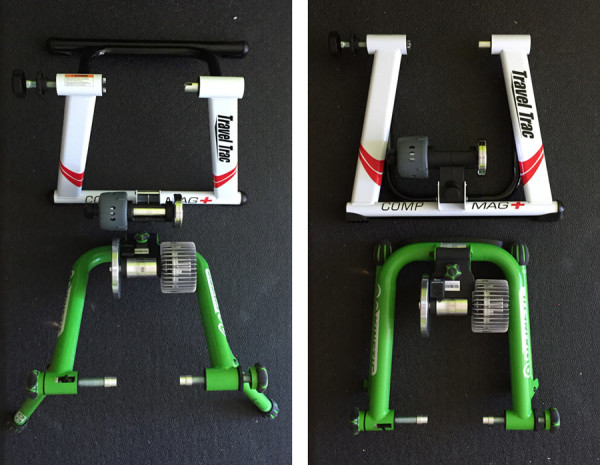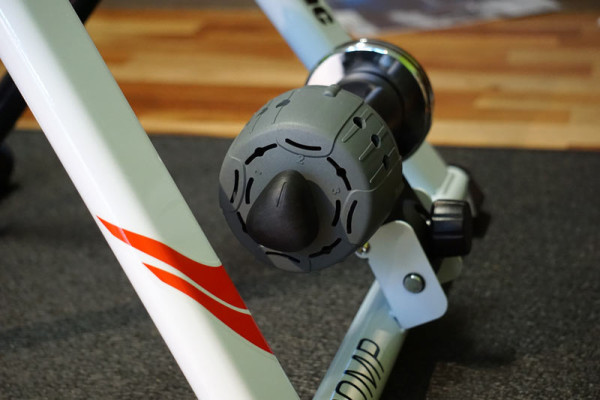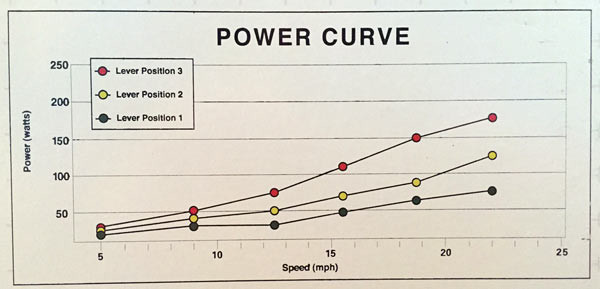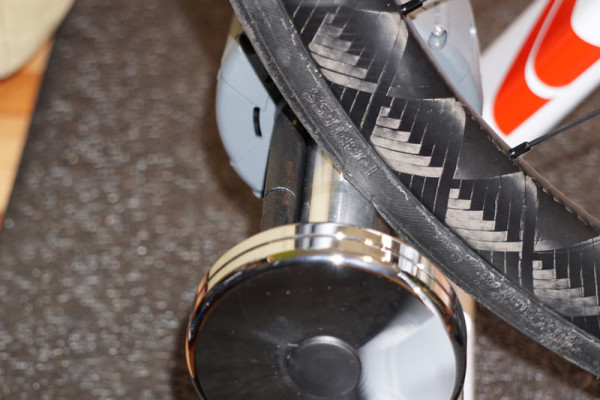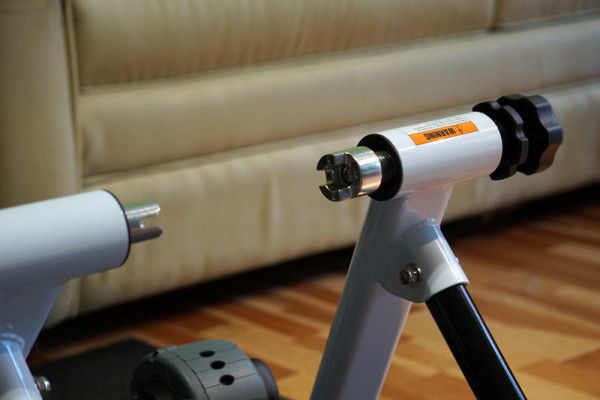We’ve tested a number of very high end trainers of the smart and not smart varieties recently, with more in the queue. But like everything else at the top of the the market these days, their prices continue to stretch past what most of us consider “affordable”.
At the opposite end of the spectrum are entry level trainers like the Travel Trac Comp Mag+ from Performance Bike. It’s cheap, but like everything else at the bottom of the market these days, it’s taken trickle down tech to provide a lot of features of trainers that used to cost much more. That’s not to say it’s for the serious cyclist looking for a premium training tool, but it’ll get the job done for anyone just looking to keep the legs in shape through the winter or if you need something simple for pre-race warmups…
It has a sturdy frame, keeping the bike solid enough for moderate out of the saddle sprints. The feet on my test unit needed to be slid out and repositioned so they were flat against the ground. It was a simple task and they’ve stayed put since.
It’s also plenty wide, as is evident when compared to the Kurt Kinetic Road Machine. It’s not quite as planted on the ground during mad dashes hopping around out of the saddle, but if you’re doing that, my hunch is you’re in the market for a bigger, better trainer anyway.
Construction quality seems fine, and the axle capture system twists smoothly and has a locknut to keep it from working loose while riding. The knob’s reasonably sized and comfortable. It comes with a skewer recommended for use since it slots directly into the frame for a secure hold. With it reasonably snug, bike wobble was well within range of any trainer I’ve tested.
Where I noticed the cost concessions were in the roller and magnetic resistance unit. The housing isn’t ugly, but is inexpensive in appearance. The resistance has three levels, controlled by a knob on the side that moves the magnets closer or further from the roller.
Above is the power curve shown on the packaging, which seems about right. Here’s what I experienced, as measured with a Polar M450 cycling computer paired with Keo Power pedals:
| SETTING | 1 | 2 | 3 |
| WATTS @ 80rpm | 57 | 89 | 106 |
It took 115+ RPM to maintain 350+ watts in a 52/11 combo on the hardest setting (3).
The roller is tiny, which puts a more incisive pressure point on the tire. Spin down rate seemed good, not to quick and not too slow. It’s not exactly mimicking road feel, but it kept me from spinning out when dropping a bunch of gears between intervals. Considering how small the flywheel is, it was surprising just how decent the spin up and down is.
In the hardest setting, noise levels are acceptable and I could carry on a conversation without yelling. But, it gets noisier in the easier settings. Not so loud that you couldn’t watch TV at a reasonable volume, but not quiet, either. My only real grip is that the roller/flywheel vibrations are felt all the way through the bike, causing hand numbness as though I was riding rough asphalt. Twenty minutes in, I was padding my handlebar with a towel.
Retail is just $149, on Performance Bike’s usual sale for $99. With the Fluid version on sale for just $129, my recommendation would be to go for it if only so it’s a bit quieter.
Besides cost, it’s got size and weight going for it. It weighed in at 22.2lbs (10.07kg), compared to the slightly heavier Kinetic (24.74lbs, or 11.22kg). That makes it a great travel trainer. Not quite as compact and light as Feedback Sports’ Omnium, but it’s less than 1/4 the cost.
It’ll fit road and mountain bikes from 26″ to 29er and could make a great little trainer for beginners, light users or those just looking for a “beater” to take to the races.
